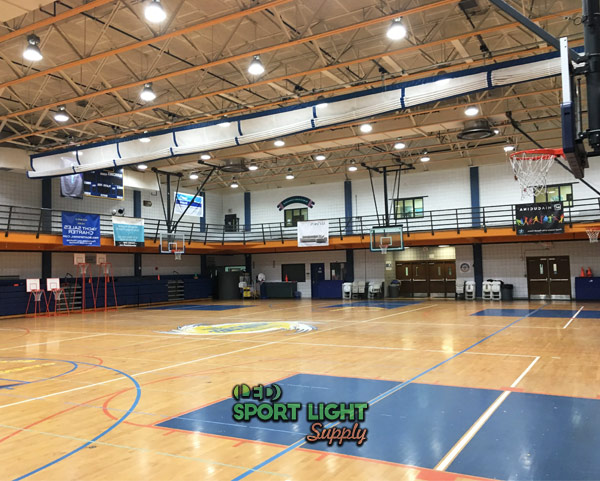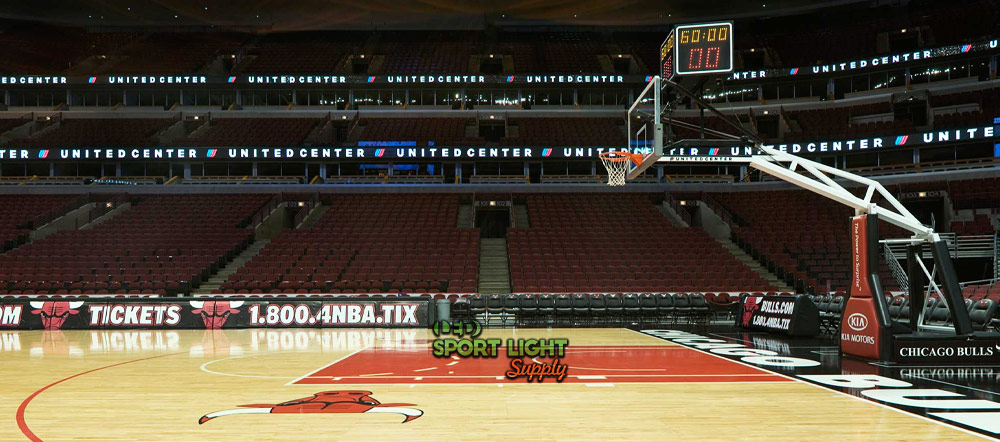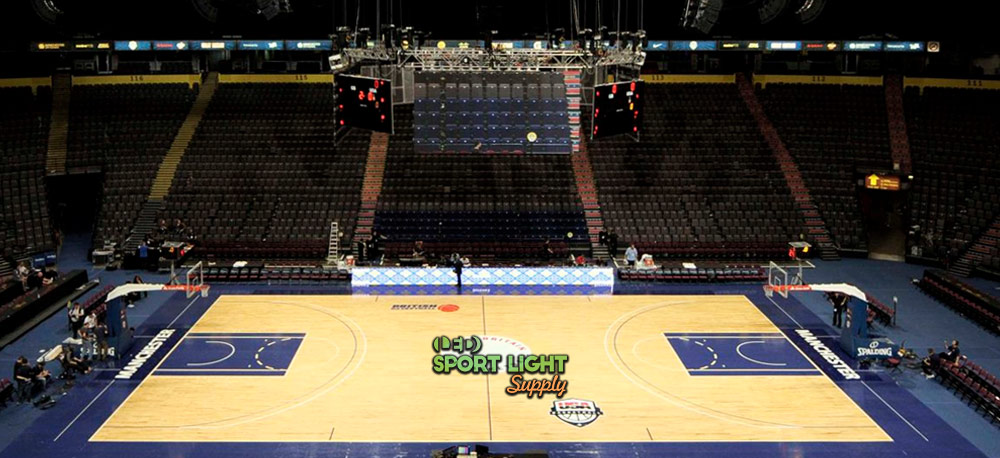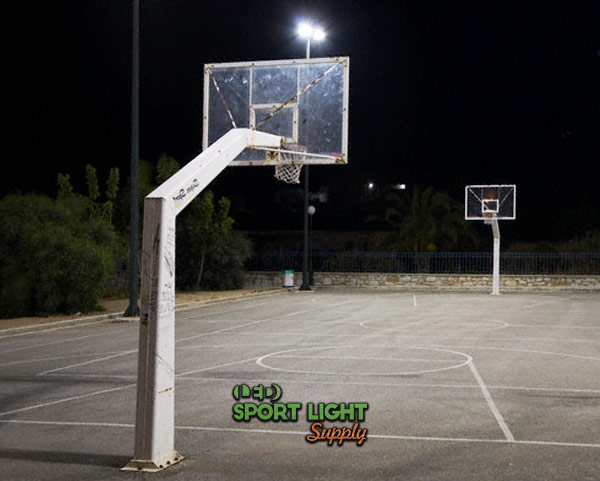Determining the correct amount of lumens is a crucial initial step in meeting basketball court lighting standards and ensuring optimal visibility and performance. The total lumen output required is directly influenced by the targeted lux level, which measures the intensity of light on a surface. In the United States, this metric is commonly replaced by the foot-candle unit, where one foot-candle equals one lumen per square foot.
To achieve the correct lighting for a basketball court, it is essential to first establish the desired lux or foot-candle level based on the specific needs of your venue. Different levels of illumination may be required depending on whether the court is used for recreational play, high school games, collegiate competitions, or professional matches. Each of these scenarios may have varying standards for light intensity to ensure that players, referees, and spectators experience clear and consistent visibility.
It is advisable to consult with your local or national sports association or governing body to determine the most appropriate lux level for your basketball court. These organizations often have established guidelines and standards that reflect the latest research and best practices for lighting in sports venues. Additionally, they may offer recommendations tailored to your court’s unique characteristics, including size, surface type, and the presence of any specialized features such as video scoreboards or broadcast equipment.
Table of Contents
ToggleUnderstanding the Total Lumens Required for Basketball Court Lighting

Key Considerations for Lumens Calculation
Before diving into the formula for calculating the total amount of lumens needed for basketball court lighting, it’s important to understand the three primary classes of lighting systems available. Each class has its own set of requirements and standards, which will influence the amount of lumen output necessary. The formula will help you determine the total lumens, but it is crucial to ensure that the lux level aligns with the specifications of the chosen class. If your sports association has not provided a specific lux level, you can refer to the minimal values suggested for each class as a guideline.
Lighting System Requirements
Basketball players operate in various areas of the court, and the scoring can occur from different distances, making it essential for the lighting system to offer uniform and comfortable visibility. The lighting must be designed to illuminate the court effectively without creating glare that could impair the players’ vision. Excessive brightness can be as problematic as insufficient lighting, as it may cause discomfort and reduce the safety of the playing environment. The goal is to ensure that the lights enhance player performance and safety by providing a clear and consistent view of the court without causing any distractions or visual impairment.
Lux and Footcandle Requirements for Basketball Courts

Indoor vs. Outdoor Lighting Standards
The lighting design for basketball courts is crucial to ensure adequate visibility for both games and special events. The light levels required can vary significantly based on the nature of the event, whether it’s a high-profile televised match or a local training session. The standards are divided into three classes, each with specific lux and footcandle requirements.
| Court Type | Class | Lighting Requirement (Lux) | Lighting Requirement (Footcandles) | Description |
|---|---|---|---|---|
| Indoor Basketball Courts | Class I | 750 lux | 69.67 fc | Essential for international and first-rate matches; provides high illumination for professional games. |
| Class II | 500 lux | 46.45 fc | Suitable for national league games; ensures good visibility for players and spectators. | |
| Class III | 200 lux | 18.58 fc | Adequate for regional and local matches, and high school training; provides sufficient visibility for less critical games. | |
| Outdoor Basketball Courts | Class I | Less than 500 lux | 46.45 fc | Sufficient for top-tier outdoor events; supports effective player performance under natural light conditions. |
| Class II | Approximately 200 lux | 18.58 fc | Appropriate for national and regional outdoor events; maintains reasonable visibility. | |
| Class III | 75 lux | 7 fc | Suitable for local games and training; provides modest lighting for less formal events. |
Lighting Uniformity and Color Rendering Index (CRI)

In addition to the basic lux and footcandle requirements, lighting uniformity and Color Rendering Index (CRI) values are essential for optimal lighting performance.
| Aspect | Details |
|---|---|
| Uniformity | A uniform lighting distribution is essential to reduce shadows and ensure consistent visibility across the court. For optimal results, a uniformity rating of 0.7 is recommended for all levels. For Class III activities, a lower uniformity rating of 0.5 is acceptable. |
| Color Rendering Index (CRI) | The CRI measures the light’s ability to render colors accurately. For Class I televised games, a minimum CRI of 60 Ra is recommended to ensure high-quality color representation. For Class III events and training sessions, a CRI of 20 Ra is sufficient, providing adequate visibility without requiring high color accuracy. |
Understanding and applying these standards ensures that basketball courts are well-lit for all types of events, enhancing the experience for players and spectators while meeting necessary safety and performance criteria.
Lumens Required for Outdoor Basketball Courts

Calculating Total Lumens
To determine the total amount of lumens needed for an outdoor basketball court, you can use a straightforward formula:
Lux x Area (sq. meters) x 1.2 (Light Loss Factor) = Total Lumens
The light loss factor accounts for various elements that affect the actual light output, such as lamp tilt, surface depreciation, dirt accumulation, and the temperature of the luminaires. The lux value represents the desired illumination level for the court.
For instance, consider a Class II outdoor basketball game played on a court measuring 436 square meters. Using the formula:
500 lux x 436 sq. meters x 1.2 = 261,600 lumens
This calculation provides the total lumens required to achieve the desired light level on the court.
Additional Considerations
Once you have calculated the total lumens, other factors must be considered to ensure proper installation and compliance with regulations. For outdoor venues, you may encounter restrictions such as maximum pole heights set by building codes or city ordinances designed to minimize light pollution.
Moreover, if the game is televised, it is crucial to use flicker-free lights to avoid issues with video quality. Flickering can lead to complaints from broadcasters and affect the viewing experience, potentially impacting future sports broadcasting opportunities.
Professional Lighting Design
For high-profile venues, such as an NBA basketball stadium, achieving the ideal lighting setup can be complex. A professional lighting design tool like DIALux can help in creating an accurate lighting plan. For instance, an NBA basketball arena typically requires:
750 lux x 495 sq. meters x 1.2 = 445,500 lumens
In addition to the total lumens, a professional design must consider lighting uniformity and the placement of luminaires to accommodate spectators and media without causing discomfort glare. The complexity of the design ensures that the lighting meets high standards suitable for prestigious sports events.
Simple Solutions for Smaller Courts
For smaller outdoor basketball courts, such as those in a backyard, a more basic approach can be effective. Using a light meter or a light meter app on a smartphone can help determine the appropriate lumens for a smaller area. For example, if your backyard court measures 20 square meters and requires 75 lux:
75 lux x 20 sq. meters x 1.2 = 1,800 lumens
This simpler method is sufficient for smaller courts, providing adequate lighting for recreational play without the need for complex calculations or high-end equipment.
Understanding Lumen, Lux, and Foot Candle Units
Lumen, lux, and foot candle are units used to describe different aspects of light measurement. Although they are related, each unit expresses a distinct concept:
Lumen (lm)
The lumen measures the total amount of visible light emitted by a light source. It represents the light’s luminous flux, which is the total quantity of light emitted in all directions. Regardless of the light source—whether it’s an LED, metal halide, or incandescent bulb—the lumen value remains consistent, indicating the overall brightness output of the light source.
When the angle of a light fixture changes, the lumen output remains the same. However, the perceived brightness at different points in a room or area can vary due to changes in the direction and distribution of the light. This is why precise photometric calculations are crucial for applications such as lighting a basketball arena, where even distribution of light is essential for optimal visibility.
Understanding lumen output helps in managing issues like light trespass and glare, particularly in outdoor settings where excessive light spill can affect surrounding areas and disturb neighbors. It also aids in choosing appropriate fixtures to ensure adequate lighting without causing discomfort or visibility problems.
Lux (lx)
Lux measures illuminance, which is the density of light that falls on a surface. It quantifies how much light is spread over a specific area. As the distance between a light source and the surface increases, the same amount of light is spread over a larger area, reducing its density. Therefore, to maintain a consistent lux level on a surface, more light sources may be required as the area grows.
Illuminance is inversely related to the square of the distance from the light source. For instance, a wider beam angle in lighting fixtures will scatter light over a larger area, reducing the illuminance (lux level). Conversely, a narrow beam angle focuses light more intensely on a specific area, increasing the lux reading. This relationship is vital when designing lighting systems for various activities, including basketball games, where specific lux levels are required for optimal performance and visibility.
Foot Candle (fc)
The foot candle is an imperial unit that measures illuminance similar to lux but in the imperial system. One foot candle is defined as the amount of light falling on a surface one foot away from a light source with an intensity of one candela. In more practical terms, one foot candle equals one lumen per square foot.
The concept originated from the light emitted by a single candle, which was historically used as a reference. Today, the foot candle measurement helps in understanding light intensity in terms familiar to those using imperial units. For example, a light source producing one candela of intensity will result in one foot candle of illuminance on a surface one foot away.
Measuring Lux and Foot Candles on a Basketball Court
Understanding Foot Candle Measurement
Foot candles are a practical and cost-effective way to measure light intensity on a surface. Using a light meter, you can easily assess the illuminance, which is the amount of light falling on a specific area. As with lux, the measurement in foot candles varies based on distance from the light source. The farther you are from the light, the lower the reading will be.
When measuring foot candles, the angle at which the light is emitted also affects the reading. If you start by measuring illuminance with the light source positioned at a particular angle and then tilt it, the light meter will reflect a change in the reading. This happens because the light intensity and distribution are altered by the angle of incidence. Consequently, both the foot candle and lux values are influenced by both distance and the direction of the light source.
Measuring Lux
Lux is the metric equivalent to foot candles and is used to measure the illuminance in terms of the metric system. Similar to foot candles, lux measurements will change with the distance from the light source and the angle at which light hits the surface. Moving away from the light source results in lower lux readings, and tilting the light source alters the distribution of light, affecting the lux measurement.
Expert Lighting Design
To achieve precise and effective lighting for a basketball court, a photometric analysis is often necessary. This analysis is conducted by a professional lighting designer who takes into account various factors that influence illuminance. These factors include the reflectance of surrounding surfaces (such as walls and floors) and the desired type of lighting, whether direct or indirect.
Professional lighting designers use specialized tools and methodologies to ensure that the lighting design meets all requirements for performance and safety. They evaluate how light interacts with different surfaces and how various lighting configurations impact overall visibility. Given the complexity involved in optimizing light distribution and achieving consistent illuminance, consulting an expert is often more practical and effective than attempting to perform these calculations independently.
Conclusion
Accurately measuring foot candles and lux is crucial for achieving effective lighting on a basketball court, ensuring both performance and safety. While foot candles offer a straightforward way to gauge light intensity, and lux provides the metric equivalent, the complexities of light distribution and its impact on visibility necessitate a professional approach. A lighting designer’s expertise in conducting a detailed photometric analysis ensures that all factors, from distance and angle to surface reflectance, are meticulously considered. This comprehensive approach guarantees a well-illuminated court that enhances gameplay and meets all regulatory standards.
